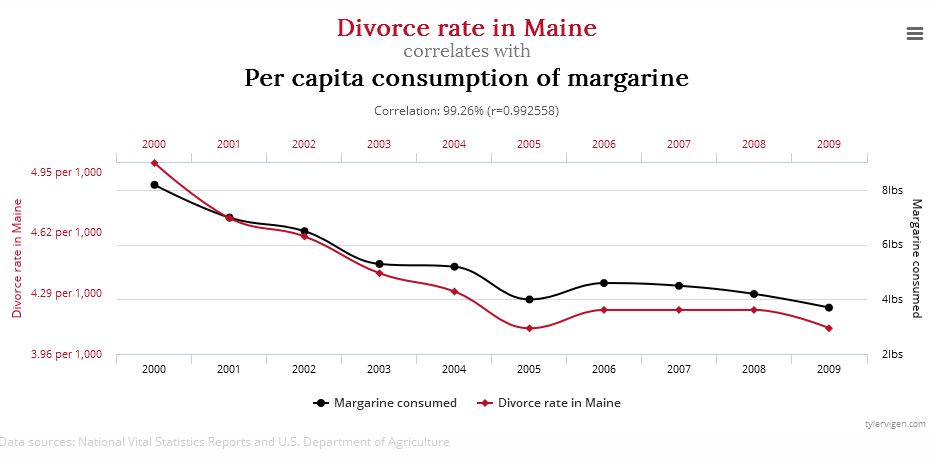Neonicotinoids (neonics for short) is the name for a class of modern seed treatments that have become a favorite of farmers because their effects are targeted to hit destructive pests the hardest, making pesticides a good deal safer than conventional crop protection alternatives and certainly better than organic pesticides, and they work better than anything else. Safer and more effective. What’s not to love?
Well, if there’s one thing that activists hate, it’s progress. Groups like 38 Degrees despise modern agriculture, so they’ll do anything to stop advanced pesticides—including hold fundraising campaigns for Professor Goulson’s anti-neonic work. No wonder this biologist is again exaggerating his actual findings to meet the applause of his backers.
Goulson’s new report claims a 58 percent decline in the “abundance of widespread butterfly species” on English farmland from 2000 to 2009. It sounds impressive, but all Professor Goulson and his colleagues did was take data from the UK Butterfly Monitoring Scheme for 17 butterfly species and chart the ups and downs of each population against the UK government’s pesticide usage database which counts the number of hectares treated with neonicotinoids throughout the country.
The difference was declared a decline but no actual farms using neonicotinoids were examined or compared to farms that did not use the product. In other words, it was not science or even an experiment. There was no control group and only the top level figures were compared, inviting any number of confounding variables to influence the final result.
An example might help illustrate how overly simplistic this methodology is. Let’s say a new shopping center was constructed in a field that used to be the favorite habitat of a particular butterfly species. You could claim that the drop in butterfly population showed that malls kill butterflies. That same logic is how he implies that neonics “are one of the causes of these declines.”
It’s not science, it’s innuendo. The flaws are obvious. The British landscape has changed significantly since neonics were introduced two decades ago. Seven million more people live on the island today, yet everything bad that happened to butterflies in 20 years is made to be the fault of pesticides.
The study even admits that, “Habitat deterioration is the main candidate proposed to explain long-term declines in distribution and abundance of butterflies in the UK during the 20th century,” but it dismisses the possibility that the same is true in the 21st century. Why? Perhaps because it’s too much trouble to do actual science, as in a rigorous study to explore that possibility: “….this hypothesis is difficult to test. Habitat deterioration is difficult to quantify at large geographic scales and, therefore, has not been included in previous models of butterfly trends.”
In other words, science is hard. He doesn’t have time for that.
What experts who are not evangelists against agriculture know is that most of the butterfly monitoring locations are not located on arable farmland anyway, so there’s no way that the butterflies are being directly exposed to neonics. But fellow scientists are not the audience for this paper, so he tells us that “neonicotinoids are directly driving the declines in butterflies rather than acting as a proxy for agricultural intensification” because a few of the butterfly locations are near farms where neonics might be used. It’s not science, it’s conspiracy theory.
Despite Professor Goulson’s claims for sympathetic media, his report shows nothing about neonicotinoids causing butterfly declines. Way down at the end where lazy journalists fear to tread, he admits as much:
Further research is needed urgently to show whether there is a causal link between neonicotinoid usage and the decline of widespread butterflies or whether it simply represents a proxy for other environmental factors associated with intensive agriculture.One of the journal article’s reviewers amplified this observation:
The authors are to be commended for being totally up-front in disclaiming any proof of causation and in specifically noting potentially confounding variables. This is especially important because inevitably this paper will be seized upon by environmental "activists" and the media and represented as presenting a more definitive association than it does. That will NOT be any fault of the authors or of the journal, but it is virtually certain to occur.That’s true enough in the text of the paper, but it happens that Professor Goulson himself is one of the activists asserting a more definitive association. In doing so, he’s violating one of the most fundamental rules of logic: Correlation is not causation. A visit to the Spurious Correlations website illustrates this fallacy in a brilliant fashion.

The site’s collection of charts compare such amusingly unrelated items as the divorce rate in Maine to America’s per capita consumption of margarine. There is, of course, no chance that the nation’s ingestion of a butter alternative has anything to do with failed marriages in the Pine Tree State, but one could certainly use such a chart to claim otherwise to a reader unfamiliar with the subject matter. In fact, one might even suggest the need for “further inquiry” into the matter of butter and divorce.
Professor Goulson ought to be more “up front” in his dealings with the media and stop spinning his overly simplistic analysis as anything other than an observation of a mere coincidence.





Comments